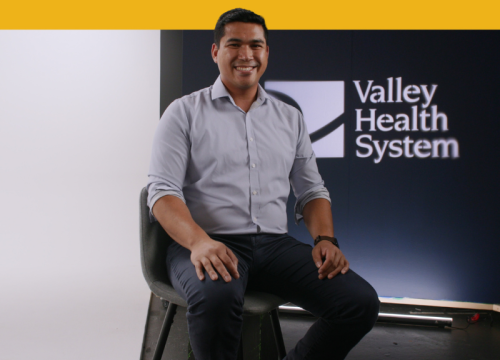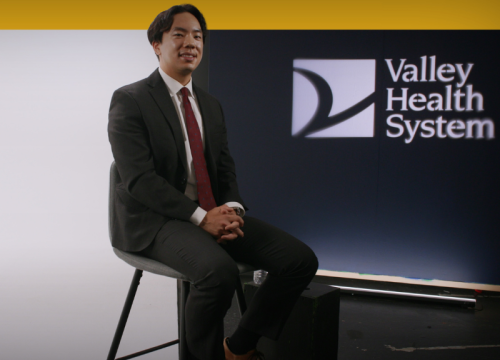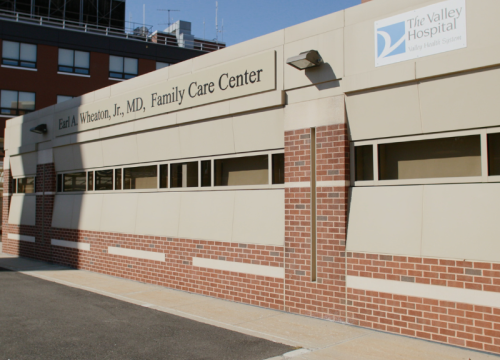Idiopathic intracranial hypertension is when you have pressure inside your skull with no known cause. If untreated, this condition can lead to blindness and other health problems.
At Valley, our endovascular neurosurgeons specialize in relieving pressure in your brain with minimally invasive techniques. We also offer options for women who have idiopathic intracranial hypertension and want to become pregnant.
Idiopathic Intracranial Hypertension Symptoms
Anyone can develop idiopathic intracranial hypertension. However, this condition mostly affects women of childbearing age who have a high BMI.
Idiopathic intracranial hypertension is also called pseudotumor cerebri because it can cause the same symptoms as a brain tumor. These symptoms include:
- Severe or frequent headaches
- Vision changes like double vision
- Vision loss
- Dizziness
- Fatigue
- Whooshing sound in the ears (pulsatile tinnitus)
- Vomiting and nausea
- Neck, shoulder or back pain
- Difficulty walking
You may only notice these symptoms during exercise, at night when lying flat, or when putting your head down. Those are maneuvers that can further increase the pressure in your skull.
Valley’s endovascular neurosurgeons use minimally invasive techniques to treat blood vessel problems affecting the brain and alleviate these symptoms.
Idiopathic Intracranial Hypertension in Pregnancy
Treating idiopathic intracranial hypertension in women of childbearing age is a key focus for our endovascular neurosurgeons.
Many medications for treating idiopathic intracranial hypertension are not safe to take if you’re pregnant or trying to conceive. Our team is committed to — and has extensive experience in — helping people who cannot take or cannot tolerate those medications.
We offer minimally invasive surgery to alleviate the pressure in your brain. This procedure can reduce the pressure for up to two years without medication — long enough to have a healthy pregnancy and birth.
There are few hospitals worldwide offering this procedure and even fewer that specialize specifically in women who want to get pregnant and have idiopathic intracranial hypertension. But Valley’s endovascular surgeons are leaders in this field. They’ll expertly guide you through all aspects of your treatment. And they’ll work closely with your OB/GYN to ensure you get the support and services you need during pregnancy and beyond.
Idiopathic Intracranial Hypertension Diagnosis at Valley
Because idiopathic intracranial hypertension can cause the same symptoms as a brain tumor, it’s important to get an accurate diagnosis. Valley’s team has the experience to correctly identify your condition, get you treated quickly — and put your mind at ease.
After taking a thorough history, your neurosurgeon may recommend one or more of the following tests to find the cause of your symptoms:
- Neurological exam to rule out other problems with your brain and nerves
- Imaging tests like computed tomography (CT) or magnetic resonance imaging (MRI) to see structures inside your skull
- Brain angiogram, when a neurosurgeon moves a tube through your blood vessel and injects dye to see blood flow in your brain
- Venogram, a special test that shows blood flow out of the brain
- Eye exam to check your vision and see if pressure is affecting your optic nerve
- Lumbar puncture (spinal tap) to check the fluid surrounding your brain and spine
Your neurosurgeon will coordinate visits with other specialists at Valley, including neurologists and ophthalmologists, who can help assess your condition. Together, they’ll work with you to determine the best treatment for your idiopathic intracranial hypertension.
Idiopathic Intracranial Hypertension Treatment at Valley
Your treatment plan may include one or more options based on the severity of your idiopathic intracranial hypertension, overall health and specific needs. These include:
- Lifestyle changes
- Medications
- Minimally invasive surgery or venous stents
Lifestyle Changes
Lifestyle changes can help manage your idiopathic intracranial hypertension. These changes include:
- Losing weight if you are overweight
- Eating a low-salt diet
- Drinking less fluids
However, changing your habits may not be enough to reverse the pressure inside your skull.
Medications to Reduce Pressure Around the Brain
We may recommend medications that reduce the production of spinal fluid, and diuretics (water pills) to help reduce pressure inside your skull and on your optic nerve. These medications can ease your symptoms and help protect your eyesight.
However, these medications may not be right for you if you are pregnant or trying to become pregnant.
Minimally Invasive Surgery
If medication doesn’t reduce the pressure inside your skull or if you cannot take medication, we may recommend a venous stent. This minimally invasive procedure can ease fluid buildup inside your skull and reduce your symptoms.
Previously, surgeons had to cut the skull to relieve pressure inside it. But at Valley, our expert team can relieve pressure by going through the blood vessels to place a venous stent (tube). This mesh tube improves blood flow from the brain to the neck, reducing pressure in your skull.
During this procedure, your endovascular neurosurgeon inserts a thin tube (catheter) through your wrist or groin into your blood vessel. Using special guidance systems, your neurosurgeon moves the catheter through your blood vessel to your brain. Then, your surgeon places a stent inside the blood vessel to improve blood flow and relieve pressure inside the skull.
Why Choose Valley for Idiopathic Intracranial Hypertension Care?
- Minimally invasive brain surgery close to home: Valley’s endovascular neurosurgeons are internationally known for their expertise in minimally invasive brain procedures, including venous stents for intracranial hypertension and pulsatile tinnitus. This means you don’t have to leave your community to get the most advanced brain surgery.
- Dedicated expertise in neurosurgery care: We are committed to maintaining the highest standards of care for our neuro patients. Valley’s hybrid operating room (OR) has the latest technology for minimally invasive brain surgery. This includes advanced computer guidance systems, 3D imaging and brain angiograms. We also have a dedicated neuro ICU, staffed by specially trained nurses. We call these nurses our Brain Squad because they have advanced knowledge and skills to support you during your recovery.
- Radial artery (wrist) access: Whenever possible, our endovascular neurosurgeons perform minimally invasive treatments for idiopathic intracranial hypertension through the artery in your wrist. This approach, called radial artery access, causes less pain, bleeding and infections than using an artery in your groin. You can also go home faster after wrist access, compared with groin access.
- Coordinated care for vision loss: Your endovascular neurosurgeon will work with your ophthalmologist to help prevent or manage vision loss from increased pressure on your optic nerve. Together, they’ll develop a comprehensive plan to reverse your idiopathic intracranial hypertension and protect your eyesight.
















